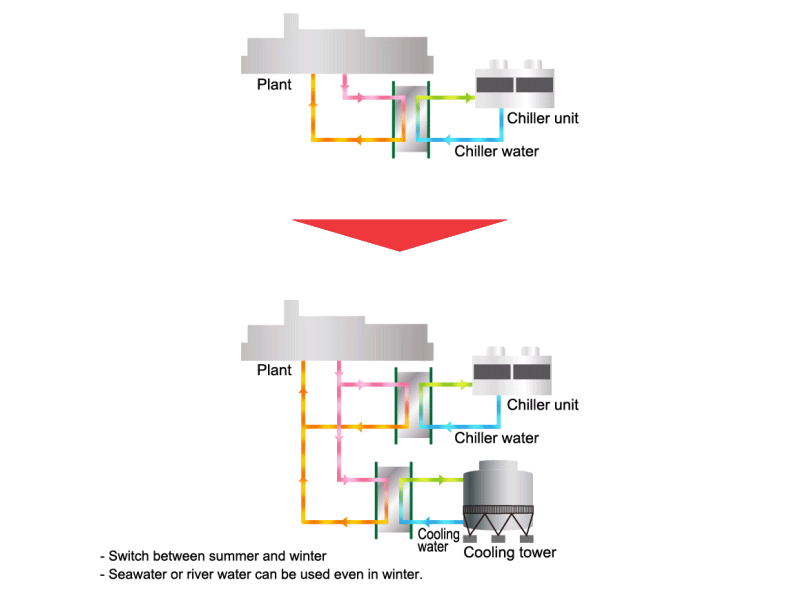
- Find the heat recovery loop that is shaped like the symbol for infinity (∞).
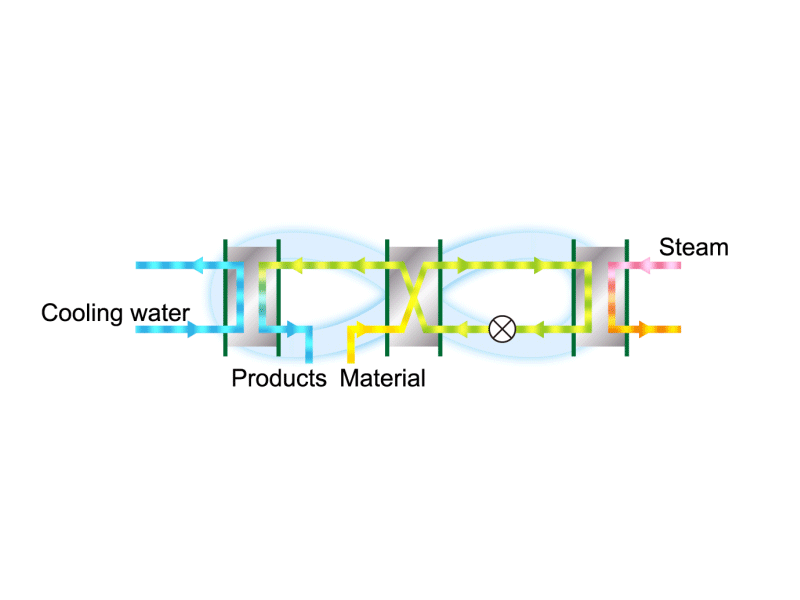

- Use a heat source with a similar temperature to improve efficiency! Find the best heating/cooling source

- Use the heat (latent heat) of steam

- Review temperature conditions and change operating conditions

- Think outside the box to aim for the best solution
General Industry
Ultrapure Water (UPW) System


Process overview
Especially in the precision industry, such as semi-conductor, a liquid crystal screen, solar panel factory is required such high purity water in the process. Ultrapure water (UPW) is refined through RO films, which maximize its performance around 25°C Usually, plate heat exchanger installed before RO modules.
- Improvement effect
- Combining the infinity loop (∞) consisted of RO feed and discharge RO, and RO heater by use point return, the heat recovery system is established in the UPW system.
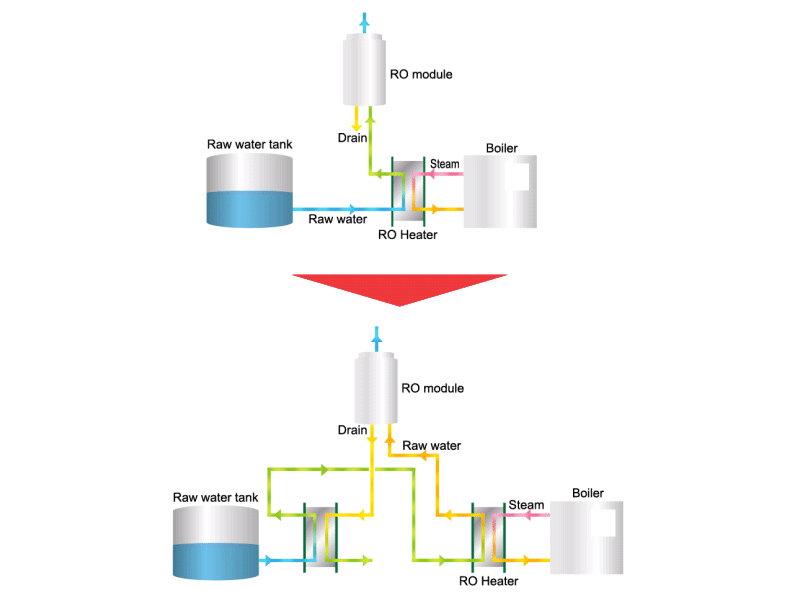
Rinsing Process

Process overview
In order to clean/wash/rinse the product effectively, hot water is supplied heating up through the heat exchanger. These applications are often seen in the bottling process, plate glass process and so on.
- Improvement effect
- The rinsing machine continuously discharges the waste hot water after rinsing the product, consider to create an infinity loop (∞). Feeding clean water is to be heated up and discharging wasted water is to be cooled down.
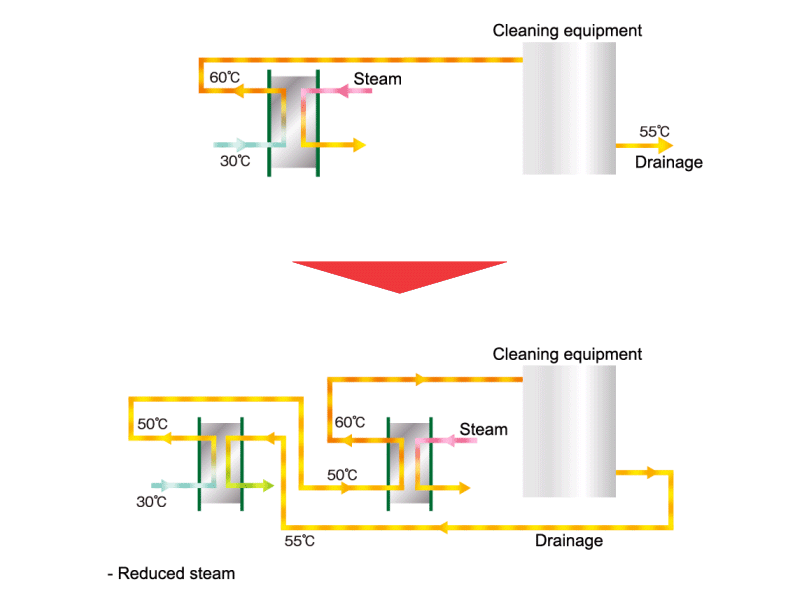
Boiler Blow Recovery


Process overview
In common, boiler process has the continuous drain blow to maintain the water quality. Here, the pair of the feed and the discharge can be found. This is also quite simple application, but the point to be considered is how to heat up the boiler feed. If boiler feed water can be as high as possible, boiler fuel consumption can be reduced.
- Improvement effect
- The continuous boiler drain can be utilized as the heat resource to pre-heat the feed water up. When combine the drain and the feed water, an infinity loop can be created (∞).
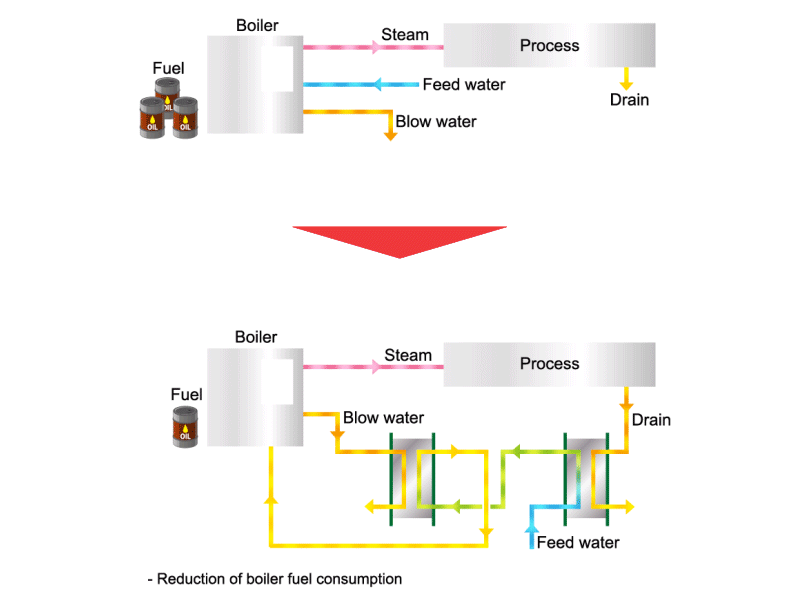
Plate to Replace Pump


Process overview
By doubling the difference in temperature between the inlet and outlet, the flow rate can be cut in to half and the energy consumption of the pump can be reduced. In addition, the capacity of the piping and circulation pump also becomes compact, which is effective in reducing the construction costs.
- Improvement effect
- The advantages of using SX series are shown in the table. The smaller bore piping reduces the amount of piping materials and heat insulating materials that are used, which reduces initial construction costs by 35%, and the flow rate of the circulating water reduces pump power consumption by 40%. As a result, carbon emissions can be reduced by 40.9% as a "green building" effect, even if the amount of heat recovered is the same.
Free Cooling System

Process overview
In areas where the outside temperature drops significantly in winter, the cold atmosphere can cool the circulating water in the cooling tower to the same level as the cold water from the chiller unit, so it is used as a cooling source for the plant instead of chiller water.
